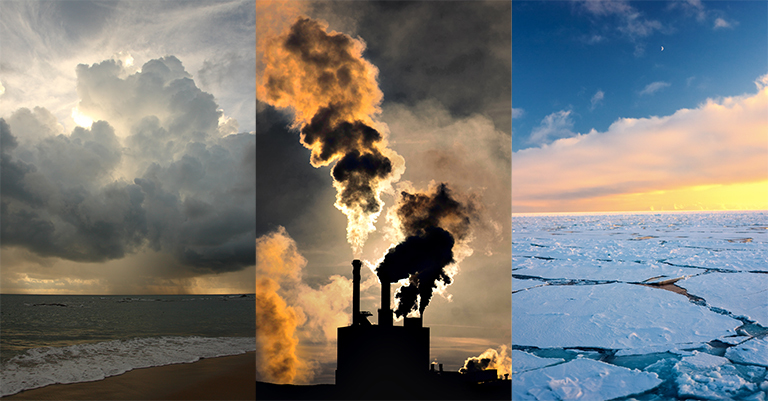
Justin Chassin is a senior computer science and applied math and statistics dual major.
The climate clock is ticking down: There are now around six years before we reach an irreversible climate catastrophe.
Tick. Tick. Tick.
We race against time as carbon dioxide emissions continue to destroy the atmosphere.
In spite of our limited window, 215 out of 500 U.S. companies on the S&P Index Fund have no set standards for reducing emissions. Many companies tout their commitment to combating pollution, yet they have no clear plans for execution.
The oil industry has historically blocked initiatives that tackle climate change, rather than allocating resources to renewable energy programs. Companies such as ExxonMobil are on trial for acknowledging the threats of climate change decades ago, but not taking any accountability for their part in contributing to the crisis. They instead have spent millions on marketing campaigns to mislead the public about their contributions to the cause.
Although it may come as a surprise to some, our generation is being impacted as we speak.
A child born today faces health risks to their immune systems from environmental pollutants, along with long-term damage from heightened temperatures and air pollution. We have seen an increase in wildfires, especially in California, directly caused by the Earth’s rising temperature.
At a time when profit is more important than the preservation of the environment, fiction is powerful in not only visualizing the future but framing conversations to reflect the urgency of the climate crisis.
Great works of climate fiction, such as “New York 2140” and “Oryx and Crake,” speculate new realities where readers can envision a future shaped by the accelerated effects of climate change.
One challenge we currently face with understanding climate change is that it can sound abstract for many people who have not witnessed its effects. The imminent threat right in front of us can appear like a problem that is years away. Therefore, we feel comforted thinking that the detrimental long-term effects are in the far future.
Climate fiction or cli-fi transforms an abstract future into a concrete reality. This is accomplished through rich stories that dive into how characters’ daily lives are impacted by climate change. Through experiencing a new yet familiar world through the characters’ eyes, we get to see how climate change could impact our own day-to-day lives. This contextualizes future conditions in a more powerful way than statistics.
“New York 2140,” for example, imagines a New York City where sea levels have risen 50 feet, roads are replaced with canals and sky bridges connect buildings. We see characters navigate through an uncanny world of bustle and power dynamics, where humankind has to deal with continuously rising waters. We also see how climate change exacerbates inequalities — lower-income neighborhoods struggle underwater, while higher-income ones live unaffected in skyscrapers.
The novel includes an omniscient character called “the citizen,” who recounts the history of destructive pulses — stages in which sea levels rose — that led to a new Manhattan. Through this history, we receive warnings about what happens when people in a capitalist society say that they can’t pay the price for survival because it is not cost-effective.
As the climate crisis worsens, it is critical that we take action, no matter how costly it may be. As predicted by climate fiction, how we react to the crisis now will decide whether humankind will be able to solve the problem of climate change or will have to struggle for survival in the future.




















